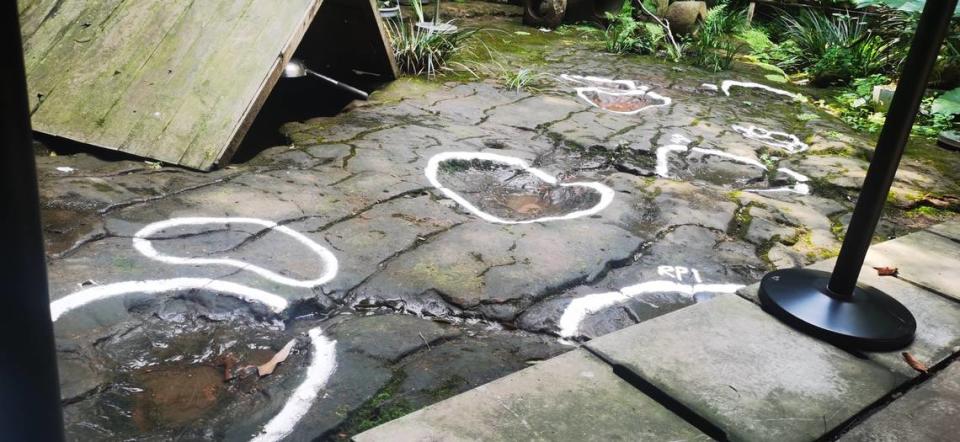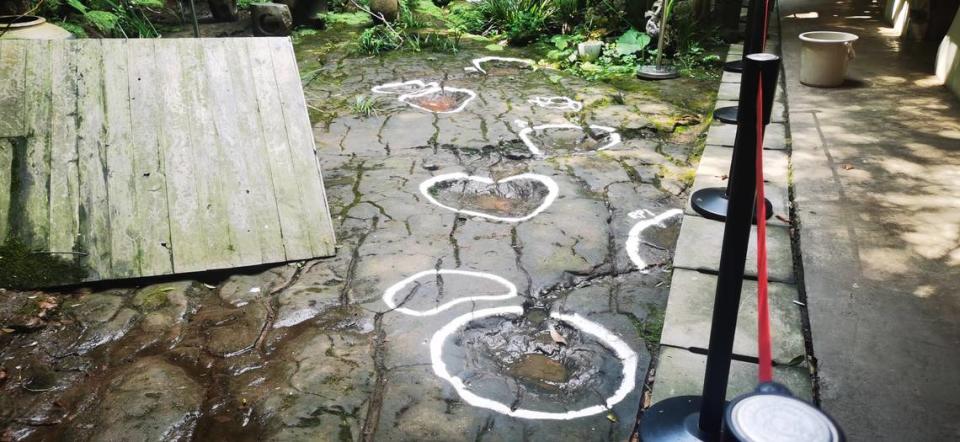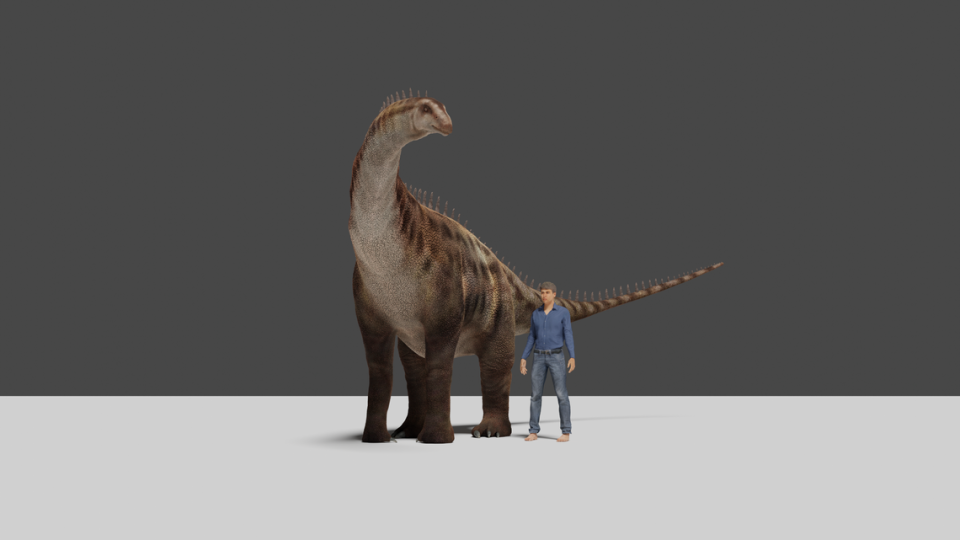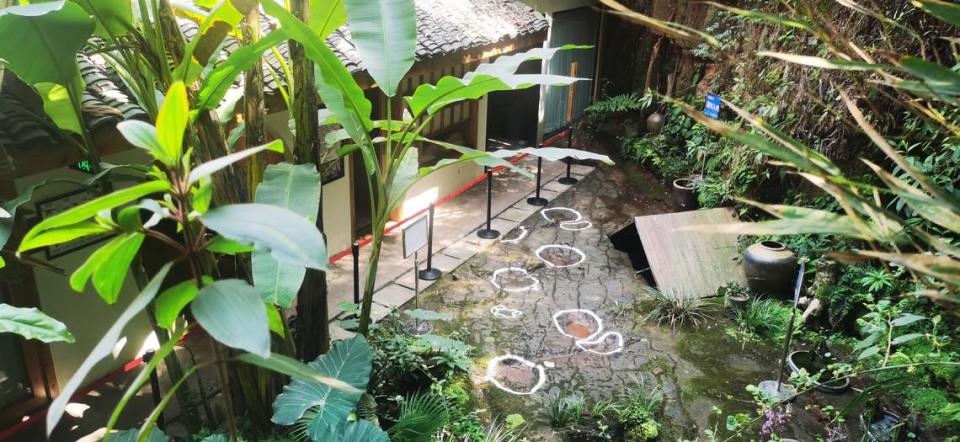Observant customer notices hole on restaurant floor. Then came a prehistoric find
Ou Hongtao, a Chinese architect, was eating in a restaurant in Leshan City in the Sichuan Province of China when he noticed something on the floor.
Because of his job, he likes to take a closer look at weird rock formations or interesting stones. This time, he thought the shapes looked familiar.
Hongtao reached out to Chinese researcher Lida Xing and told him the holes looked like something he had seen in a news report before.
He told Xing he thought they had been made by dinosaurs.

Just a few days later, Xing and members of his research team made the trek to Leshan City and had a look for themselves.
Hongtao was right.
In a study published in Cretaceous Research on March 22, an international research team identified the mysterious imprints as the footprints of a sauropod, made more than 100 million years ago.
The “pits,” as the researchers called them, were first found in the 1950s by homeowners, but they covered them up to make the floor more level, Xing said in a news release from the University of Queensland.

When new owners bought the place three years ago, they turned it into a restaurant, and the footprints were once again uncovered, Xing said.
“The region has no skeletal record of dinosaurs, so these (fossilized) tracks provide invaluable information about the types of dinosaurs that lived in the area,” Xing said in the release.
Anthony Romilio, a researcher with the University of Queensland’s Dinosaur Lab, told McClatchy News in an email the type of dinosaur that made the tracks was “never questioned.”
“Massive … size footprints and handprints that are shaped like kidney beans are characteristic of these long-necked dinosaurs,” Romilio wrote. “The length of the footprint (~60 cm) was used to estimate the size of the trackmaker.”
Romilio said the researchers used the size of the footprint and multiplied it to give a measurement for the length of the dinosaur’s leg up to the hip joint. Then, giving a little extra length for bones and muscle, the researchers compared the leg size to fossil specimens, revealing the dinosaur that made the pits was a smaller sauropod, maybe not fully grown.

“Measuring the step and stride lengths allows us to estimate if it was walking or running, as well as the speed it likely (traveled). Sauropods are renowned for being slow walkers, and the restaurant sauropod was no exception: only 2 km/hr for such a beast,” Romilio added.
In an effort to preserve the tracks, they have since been partitioned off from the rest of the restaurant. Romilio said there is now signage and an effort to build a permanent covering.

“In the first week, many people visited and it became a hot topic in the local area. Everyone is very surprised that there are records of dinosaurs in the area of daily life,” Xing told Romilio in an email.
Romilio said members of the public, like Hongtao, make significant contributions and discoveries “more frequently than you may think.”
“It’s a testament to the value of being curious about our surroundings and paying attention to the world around us,” he said in the release. “For some people discoveries can come from unlikely places – even while you’re having a bite to eat.”
Rock crystal sat in museum for nearly 2 centuries — then they found it wasn’t a rock
There’s an animal hiding in this video — and it serves as a reminder. Can you spot it?
Signs of life in mummy exhibit in Mexico have experts worried for those who get close
2,000-year-old Roman sanctuary — and nearby burial ground — uncovered in France


